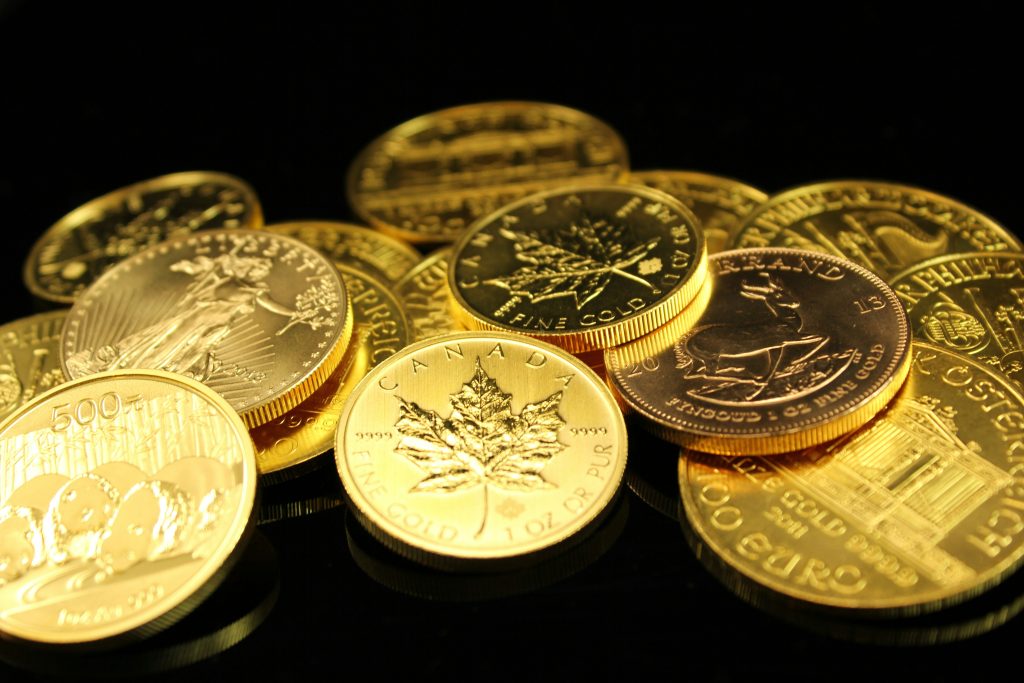- MetCon Silver Kilobar
The Basics of the Gold Standard: What You Need to Know

Table of contents
Are you curious about how economies were once stabilised and currencies valued? The Gold Standard is a monetary system that ties currency values to gold, significantly influencing global economies.
Understanding the Gold Standard can help you better appreciate the evolution of monetary systems and how they impact economic stability. This knowledge can empower you to make more informed decisions about your investments and financial future.
Dive into this comprehensive guide to discover how it works, its benefits and drawbacks, and why it remains relevant today. Learn essential insights for investors, economists, and anyone interested in financial history, highlighting the significant influence of global events on precious metal prices.
What is the Gold Standard?
A monetary system known as the “gold standard” directly ties the value of a nation’s currency or banknote to the price of gold. Under this system, countries agreed to exchange banknotes for a fixed amount of gold. Countries that adhere to this system set a fixed price for gold and buy and sell gold at that rate.
This system is often hailed for its ability to provide stability and certainty. It’s seen as a way to prevent governments from inflating their economies by producing too much paper money. However, the system is not without its critics, who argue it can restrict economic growth and exacerbate recessions.
The History of the Gold Standard
The history of the gold standard is a rich tapestry woven through the economic and political narratives of nations across the globe. It first came into widespread use in the 1870s. This is when many countries sought to standardise transactions in the booming world trade market. It promised stability, with its value tied directly to the universally coveted resource of gold.
However, the gold standard wasn’t without its trials and tribulations. The early 20th century saw a series of economic shocks, including World War I, the Great Depression, and World War II. These shocks led to many countries suspending or abandoning the gold standard. The final nail in the coffin came in 1971, when the United States, the last major holdout, abandoned it.

The History of the Gold Standard
The history of the gold standard is a rich tapestry woven through the economic and political narratives of nations worldwide.
Early Forms of the Gold Standard
Early forms of the gold standard date back to ancient civilizations, where gold was used as a medium of exchange. In the 17th and 18th centuries, European countries began linking their currencies to gold, establishing a precursor to the modern gold standard. This early system helped stabilize currency values and facilitated international trade by providing a common standard for exchange.
Establishment During the 19th Century
The gold standard became more formalized during the 19th century. Countries like Britain and the United States adopted it to stabilise their currencies and promote international trade. The system required governments to back their currencies with gold reserves, limiting inflation and ensuring currency convertibility. This period saw significant economic growth and stability, as the gold standard facilitated global trade and investment.
The Gold Standard Act of 1900
The Gold Standard Act of 1900 in the United States officially established the gold standard by defining the dollar in terms of gold. This act mandated that paper currency could be exchanged for gold at a fixed rate, further solidifying the U.S. commitment to the gold standard. The act helped stabilize the U.S. currency and reinforced its position in international trade, contributing to economic stability during that era.
Impact of World Wars on the Gold Standard
The early 20th century saw a series of economic shocks, including World War I, the Great Depression, and World War II. World War II further eroded the system as countries needed to print more money to fund military operations. The aftermath saw the establishment of the Bretton Woods system, which eventually led to abandoning the gold standard in favour of fiat currency systems.

Mechanisms of the Gold Standard
This system has been historically significant, offering both benefits and drawbacks. Understanding its mechanisms is crucial for evaluating its advantages and disadvantages.
Advantages of the Gold Standard
The gold standard offers several economic benefits, including enhanced currency stability and a natural check on inflationary pressures.
Stability in Currency Value
The gold standard ensures stability in currency value by linking it to a physical commodity, which greatly reduces fluctuations and fosters trust in the currency. This stability not only encourages international trade and investment by providing a reliable exchange rate but also helps in maintaining economic confidence among investors and consumers, ultimately contributing to a more robust global economy.
Prevention of Inflation
The gold standard prevents inflation by limiting the amount of currency that can be printed, as it must be backed by gold reserves. This constraint helps maintain low inflation rates and prevents excessive monetary expansion. By tying the value of currency to a physical asset, the gold standard promotes greater trust among consumers and investors in the stability of the economy.
Encouragement of Fiscal Discipline
The gold standard encourages fiscal discipline by restricting governments from printing excessive money, thereby forcing them to manage their finances more responsibly. This discipline helps prevent budget deficits and promotes sustainable economic policies.

Disadvantages of the Gold Standard
The gold standard presents several challenges that can significantly impact the economy and financial stability.
Limited Monetary Policy Flexibility
The gold standard’s inflexibility in monetary policy is a direct result of the money supply’s rigid connection to and dependence upon gold reserves. This limits central banks’ ability to respond to economic downturns or financial crises by adjusting interest rates or increasing the money supply.
Economic Shocks
Economic shocks can be amplified under the gold standard due to its rigidity. This inflexibility limits the ability of governments and central banks to respond during periods of economic downturn or crisis. For instance, if a recession occurs, the gold standard restricts the ability to increase the money supply, which can worsen the situation as businesses struggle to access the liquidity necessary to operate effectively.
Gold Supply Issues
Issues with gold supply, such as limited mining or hoarding, can lead to economic instability as the money supply cannot be adjusted to meet the needs of a growing economy. Countries that adhere strictly to the gold standard may find themselves at a competitive disadvantage in the global economy, as their monetary policies are tied to fluctuations in gold rather than the underlying economic realities.
Deflationary Pressures
The gold standard can create deflationary pressures because the money supply is limited by the amount of available gold. If the economy grows faster than the gold supply, prices may fall, leading to decreased investment and economic stagnation due to the increased real value of debt.

The Standard System and South Africa: A Historical Overview
South Africa’s relationship with the gold standard is an intriguing aspect of its economic history, closely linked to its vast gold reserves. In the early 20th century, South Africa embraced the gold standard, believing that its rich gold resources would help maintain a robust currency and attract foreign investment. However, as time progressed, the country began to reevaluate this strategy.
The reliance on the fluctuating price of gold created significant challenges; when gold prices soared, South Africa thrived, but when they dropped, the nation’s fortunes diminished. This complex relationship with the gold standard reflects the shifting dynamics of South Africa’s economy and its evolution from a colonial outpost to a modern, independent state.
Why Was the Gold Standard Abandoned in South Africa?
South Africa’s decision to abandon the gold standard was complex and multifaceted. There were several reasons behind this move, each intertwined with the others.
The volatility of the gold market made economic planning difficult
The price of gold could swing wildly from day to day, affecting the value of the South African Rand. This uncertainty made it hard for businesses to plan for the future and for the government to implement effective economic policies.
Limited the government’s ability to respond to economic crises
With the currency’s value tied to gold, the government had little control over monetary policy. This made it hard for South Africa to respond to economic downturns or to stimulate the economy during periods of slow growth.
South Africa’s reliance on the gold system was seen as a relic of its colonial past
As the country moved towards independence, there was a desire to break with the economic policies of the past and forge a new path forward.

Gold Bars
The Gold Standard and South Africa’s Economic Journey
The story of the gold standard in South Africa highlights ambition, adaptation, and evolution. The standard was later abandoned after being adopted due to the country’s vast gold reserves.
Today, South Africa is one of Africa’s largest economies, reflecting its ability to navigate global economic challenges. While the gold standard is no longer in use, its influence on South Africa’s economic development remains significant.
This exploration of the gold standard offers insights into the relationship between natural resources, economic policy, and national identity, appealing to economics students, history enthusiasts, and the curious alike.
Key Takeaway
The gold standard, a system linking currency value to gold prices, has a complex history marked by stability and controversy. While it helped prevent inflation, critics argue it restricted growth. With its rich gold reserves, South Africa initially prospered under the gold standard but faced vulnerability amid global shocks.
Market volatility and a desire to sever colonial ties drove the shift away from the standard. Today, South Africa’s economy reflects resilience and adaptability, with the gold standard’s legacy highlighting the connection between resources, policy, and national identity. between resources, policy, and identity. This exploration sheds light on the gold standard’s concept, historical impact, and role in shaping South Africa’s economic path.



